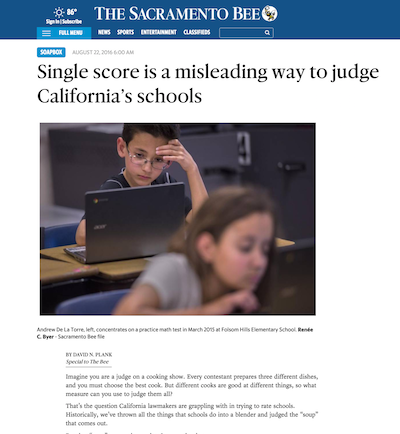Imagine you are a judge on a cooking show. Every contestant prepares three different dishes, and you must choose the best cook. But different cooks are good at different things, so what measure can you use to judge them all?
That’s the question California lawmakers are grappling with in trying to rate schools. Historically, we’ve thrown all the things that schools do into a blender and judged the “soup” that comes out.
But that “soup” score misses a lot. It conceals what we know about schools’ true performance and gives them no guidance on how to improve. A few schools in California are bad at nearly everything, but most are good at some things even as they fall short in other areas. The blender approach mixes everything together – from average test scores to performance growth to graduation rates – and fails to distinguish one from another.


